Benchmarking is a process that involves comparing your business’s performance against industry standards or competitors to identify areas for improvement and set goals. In the highly competitive Bed and Breakfast (B&B) industry, benchmarking plays a crucial role in ensuring long-term success. By analyzing key performance indicators (KPIs), tracking revenue, measuring guest satisfaction, and understanding the market, B&B owners can make informed decisions and implement changes that drive growth and profitability.
Benchmarking is important for B&Bs because it provides a clear picture of how their business is performing compared to others in the industry. It allows them to identify strengths and weaknesses, understand market trends, and make data-driven decisions. By benchmarking against successful B&Bs, owners can learn best practices and strategies that can be applied to their own business.
The benefits of benchmarking for B&Bs are numerous. Firstly, it helps identify areas for improvement. By comparing their performance to industry standards or competitors, B&B owners can identify gaps and weaknesses in their operations. This allows them to focus on areas that need improvement, such as customer service, marketing strategies, or operational efficiency.
Secondly, benchmarking helps set realistic goals for B&Bs. By analyzing the performance of top-performing B&Bs in the industry, owners can set achievable goals that align with industry standards. This not only helps improve overall performance but also motivates staff and creates a sense of direction for the business.
Lastly, benchmarking provides valuable insights into market trends and customer preferences. By analyzing data from competitors and industry leaders, B&B owners can stay ahead of the curve and adapt their offerings to meet changing customer demands. This helps them stay relevant in a highly competitive market and attract more guests.
Setting Goals: Using Benchmarking to Identify Areas for Improvement
Setting goals is crucial for the success of any business, including B&Bs. By setting clear and measurable goals, B&B owners can provide a sense of direction for their business and motivate their staff. Benchmarking plays a key role in helping B&Bs identify areas for improvement and set goals that align with industry standards.
Benchmarking allows B&B owners to compare their performance against industry leaders and identify areas where they are falling short. For example, if a B&B is consistently receiving lower ratings for cleanliness compared to its competitors, this can be identified through benchmarking. The owner can then set a goal to improve cleanliness standards and implement strategies to achieve this goal.
Another example of using benchmarking to set goals is by comparing revenue growth. If a B&B is experiencing slower revenue growth compared to its competitors, the owner can set a goal to increase revenue by a certain percentage within a specific timeframe. This goal can then be broken down into actionable steps, such as implementing targeted marketing campaigns or improving online booking systems.
By setting goals based on benchmarking data, B&B owners can ensure that their efforts are focused on areas that will have the greatest impact on their business’s success. This not only improves overall performance but also provides a roadmap for growth and profitability.
Identifying Key Performance Indicators (KPIs) for Your B&B
Key Performance Indicators (KPIs) are measurable values that indicate how well a business is performing in achieving its objectives. For B&Bs, identifying the right KPIs is crucial for tracking performance and making informed decisions. Benchmarking helps B&B owners identify the most relevant KPIs for their business and track them over time.
Some examples of KPIs for B&Bs include occupancy rate, average daily rate (ADR), revenue per available room (RevPAR), customer satisfaction score (CSS), and online reviews rating. These KPIs provide valuable insights into the overall performance of a B&B and can be compared against industry standards or competitors to identify areas for improvement.
For example, by tracking occupancy rate, a B&B owner can determine how effectively they are filling their rooms. If their occupancy rate is consistently lower than the industry average, this indicates that they may need to improve their marketing strategies or adjust their pricing to attract more guests.
Similarly, tracking ADR and RevPAR helps B&B owners understand the average revenue generated per room and per available room, respectively. By benchmarking these KPIs against competitors, owners can identify opportunities to increase revenue, such as adjusting pricing or offering additional services.
Customer satisfaction score and online reviews rating are also important KPIs for B&Bs. By measuring guest satisfaction and monitoring online reviews, owners can identify areas where they are excelling and areas where improvements are needed. Benchmarking against competitors allows owners to see how they stack up in terms of customer satisfaction and make necessary changes to enhance the guest experience.
By identifying and tracking the right KPIs, B&B owners can gain valuable insights into their business’s performance and make data-driven decisions that drive growth and success.
Analyzing Your Competition: How Benchmarking Can Help You Stay Ahead
In the highly competitive B&B industry, analyzing the competition is crucial for staying ahead. Benchmarking allows B&B owners to compare their performance against competitors and identify areas where they can gain a competitive advantage.
Analyzing the competition through benchmarking provides valuable insights into industry trends, best practices, and strategies that can be applied to one’s own business. By studying successful B&Bs, owners can learn from their successes and implement similar strategies to improve their own performance.
For example, if a competitor B&B is consistently receiving positive reviews for their breakfast offerings, a B&B owner can benchmark against them and identify opportunities to improve their own breakfast menu. This could involve offering a wider variety of options, sourcing local ingredients, or improving presentation.
Benchmarking also helps B&B owners identify areas where they are outperforming their competitors. By analyzing data from top-performing B&Bs, owners can identify unique selling points and leverage them to attract more guests. For example, if a B&B consistently receives high ratings for its customer service, the owner can use this as a competitive advantage in their marketing efforts.
Furthermore, benchmarking allows B&B owners to stay updated on industry trends and adapt their offerings accordingly. By analyzing the competition, owners can identify emerging trends and make necessary changes to stay relevant. For example, if competitors are offering eco-friendly amenities or implementing sustainable practices, a B&B owner can benchmark against them and consider implementing similar initiatives.
By analyzing the competition through benchmarking, B&B owners can gain a competitive edge and make informed decisions that drive growth and success.
Measuring Guest Satisfaction: Using Benchmarking to Improve Customer Experience
Guest satisfaction is paramount in the B&B industry. Satisfied guests not only become repeat customers but also serve as brand ambassadors, recommending the B&B to others. Benchmarking allows B&B owners to measure guest satisfaction and make improvements that enhance the overall customer experience.
Measuring guest satisfaction through benchmarking involves comparing customer feedback, ratings, and reviews against industry standards or competitors. This provides valuable insights into areas where the B&B is excelling and areas where improvements are needed.
For example, by benchmarking against competitors, a B&B owner may discover that their customer service ratings are lower than average. This indicates that there may be issues with staff training or communication. By addressing these issues and implementing strategies to improve customer service, the owner can enhance the overall guest experience.
Benchmarking also helps B&B owners identify trends in guest preferences and adapt their offerings accordingly. By analyzing feedback from guests and comparing it against competitors, owners can identify areas where they are falling short or opportunities for improvement. This could involve offering additional amenities, improving room cleanliness, or enhancing the overall ambiance of the B&B.
Furthermore, benchmarking allows B&B owners to identify areas where they are excelling and leverage them to attract more guests. By analyzing positive reviews and ratings, owners can identify unique selling points and highlight them in their marketing efforts. This helps differentiate the B&B from competitors and attract guests who value those specific features or services.
By measuring guest satisfaction through benchmarking, B&B owners can make data-driven decisions that enhance the overall customer experience and drive long-term success.
Tracking Your Revenue: Maximizing Profitability through Benchmarking
Tracking revenue is crucial for the financial success of any business, including B&Bs. Benchmarking allows B&B owners to track their revenue performance against industry standards or competitors and make informed decisions that maximize profitability.
Tracking revenue through benchmarking involves comparing key financial metrics such as total revenue, average daily rate (ADR), and revenue per available room (RevPAR) against industry benchmarks or competitors. This provides valuable insights into how well the B&B is performing financially and identifies areas where improvements can be made.
For example, if a B&B’s ADR is consistently lower than the industry average, this indicates that they may be underpricing their rooms. By benchmarking against competitors with similar offerings, the owner can identify opportunities to increase pricing and maximize revenue.
Similarly, tracking RevPAR helps B&B owners understand how effectively they are utilizing their available rooms to generate revenue. By benchmarking against competitors, owners can identify opportunities to increase RevPAR, such as implementing dynamic pricing strategies or offering additional services.
Benchmarking also allows B&B owners to identify trends in revenue performance and adapt their strategies accordingly. By analyzing data from competitors, owners can identify emerging trends in pricing or revenue management and make necessary changes to stay competitive.
Furthermore, benchmarking helps B&B owners identify areas where they are outperforming their competitors in terms of revenue. By analyzing data from top-performing B&Bs, owners can identify strategies or pricing models that are driving higher revenue and implement them in their own business.
By tracking revenue through benchmarking, B&B owners can make informed decisions that maximize profitability and drive long-term financial success.
Understanding Your Market: Using Benchmarking to Stay Relevant
Understanding the market is crucial for the success of any business, including B&Bs. Benchmarking allows B&B owners to gain valuable insights into market trends, customer preferences, and industry standards, helping them stay relevant and adapt their offerings accordingly.
Understanding the market through benchmarking involves analyzing data from competitors, industry leaders, and market research reports. This provides B&B owners with a comprehensive view of the industry landscape and helps them identify opportunities for growth.
For example, by benchmarking against competitors, B&B owners can identify emerging trends in amenities or services that are in high demand. This allows them to adapt their offerings and stay ahead of the competition. If competitors are offering spa services or pet-friendly accommodations, for example, a B&B owner can benchmark against them and consider implementing similar offerings.
Benchmarking also helps B&B owners understand customer preferences and expectations. By analyzing customer feedback, ratings, and reviews from competitors, owners can identify areas where they are falling short or opportunities for improvement. This could involve enhancing the overall ambiance of the B&B, improving room amenities, or offering personalized experiences.
Furthermore, benchmarking allows B&B owners to stay updated on industry standards and best practices. By comparing their performance against top-performing B&Bs, owners can identify areas where they can improve and implement strategies that have been proven successful in the industry.
By understanding the market through benchmarking, B&B owners can make informed decisions that keep their business relevant and attract more guests.
Identifying Trends: Using Benchmarking to Stay Ahead of the Curve
Identifying trends is crucial for staying ahead in the B&B industry. Benchmarking allows B&B owners to analyze data from competitors, industry leaders, and market research reports to identify emerging trends and make necessary changes to their offerings.
Identifying trends through benchmarking involves analyzing data on customer preferences, industry standards, and market research reports. By comparing this data against their own performance, B&B owners can identify areas where they can adapt their offerings to meet changing customer demands.
For example, if market research reports indicate a growing demand for eco-friendly accommodations, a B&B owner can benchmark against competitors and identify opportunities to implement sustainable practices or offer eco-friendly amenities. This not only helps attract environmentally conscious guests but also positions the B&B as a leader in sustainability.
Benchmarking also helps B&B owners identify emerging trends in technology and online booking platforms. By analyzing data from competitors, owners can identify new technologies or platforms that are gaining popularity and make necessary changes to stay competitive. This could involve implementing online booking systems, integrating with popular travel websites, or utilizing social media platforms for marketing.
Furthermore, benchmarking allows B&B owners to identify trends in customer preferences and adapt their offerings accordingly. By analyzing feedback from guests and comparing it against competitors, owners can identify areas where they are falling short or opportunities for improvement. This could involve offering unique experiences, enhancing the overall ambiance of the B&B, or providing personalized services.
By identifying trends through benchmarking, B&B owners can stay ahead of the curve and make necessary changes that keep their business relevant and attract more guests.
Measuring Employee Performance: Using Benchmarking to Improve Staff Efficiency
Measuring employee performance is crucial for ensuring the efficiency and effectiveness of a B&B’s operations. Benchmarking allows B&B owners to compare their staff’s performance against industry standards or competitors and make improvements that enhance overall efficiency.
Measuring employee performance through benchmarking involves analyzing key metrics such as staff-to-guest ratio, average response time to guest inquiries, and staff turnover rate. By comparing these metrics against industry benchmarks or competitors, B&B owners can identify areas where their staff may be falling short and implement strategies to improve efficiency.
For example, if a B&B’s staff-to-guest ratio is higher than the industry average, this indicates that they may be overstaffed. By benchmarking against competitors with similar offerings, the owner can identify opportunities to optimize staffing levels and improve operational efficiency.
Similarly, tracking the average response time to guest inquiries helps B&B owners understand how effectively their staff is handling guest requests. By benchmarking against competitors, owners can identify areas where their staff may be slower in responding and implement strategies to improve response times, such as implementing automated email responses or utilizing chatbots.
Benchmarking also helps B&B owners identify areas where their staff is excelling and leverage them to enhance overall efficiency. By analyzing data from top-performing B&Bs, owners can identify best practices in staff training, communication, and customer service and implement them in their own business.
Furthermore, benchmarking allows B&B owners to identify trends in employee performance and adapt their strategies accordingly. By analyzing data from competitors, owners can identify emerging trends in staff training or management and make necessary changes to stay competitive.
By measuring employee performance through benchmarking, B&B owners can make informed decisions that improve staff efficiency and enhance overall operations.
Implementing Changes: Using Benchmarking to Drive Growth and Success
Implementing changes is crucial for driving growth and success in the B&B industry. Benchmarking allows B &B owners to compare their performance and practices against industry leaders and identify areas for improvement. By analyzing key metrics such as occupancy rates, average daily rate, and guest satisfaction scores, B&B owners can identify best practices and implement changes to achieve similar or better results. Benchmarking also provides insights into emerging trends and market demands, allowing B&B owners to stay ahead of the competition and adapt their offerings accordingly. Additionally, benchmarking fosters a culture of continuous improvement within the organization, as it encourages B&B owners to regularly evaluate their performance and seek innovative solutions to enhance guest experiences and drive revenue growth. Overall, implementing changes based on benchmarking data is a strategic approach that can lead to increased profitability, customer satisfaction, and long-term success in the B&B industry.






